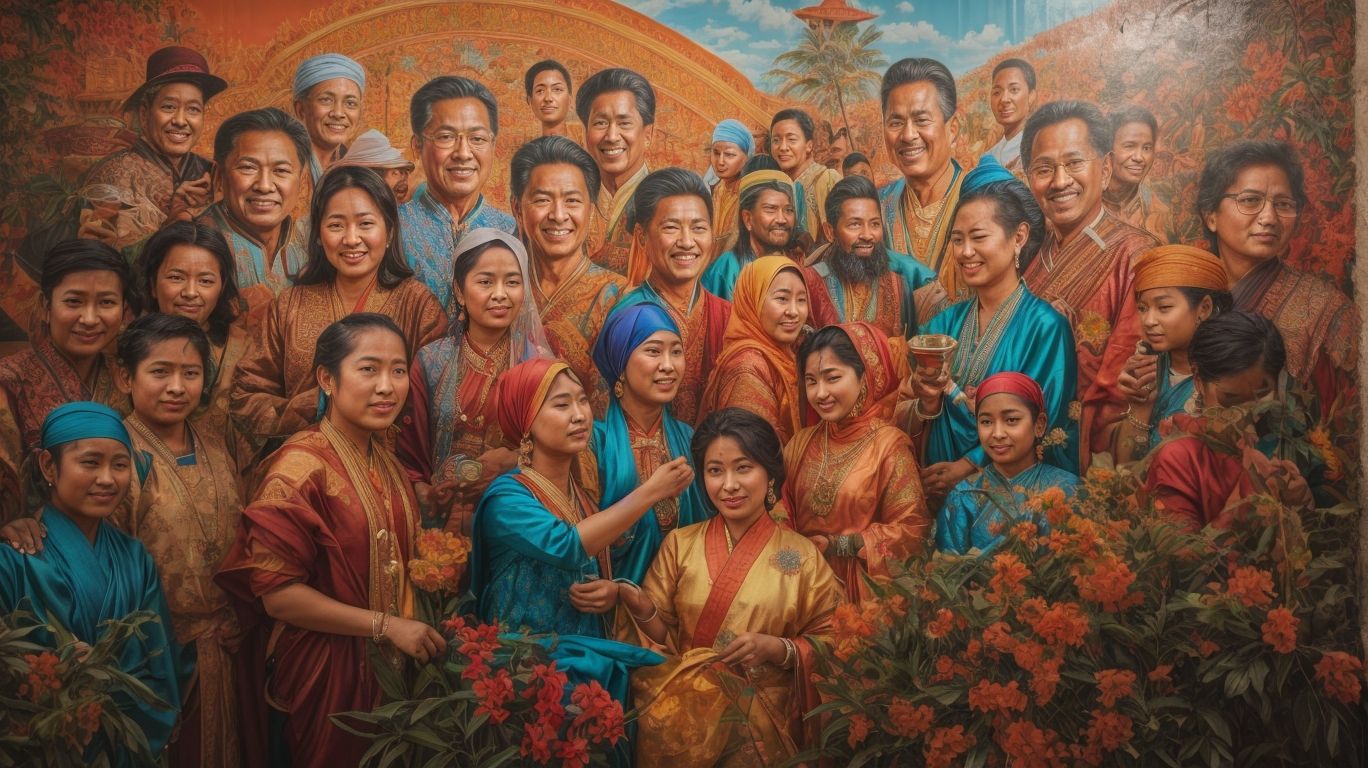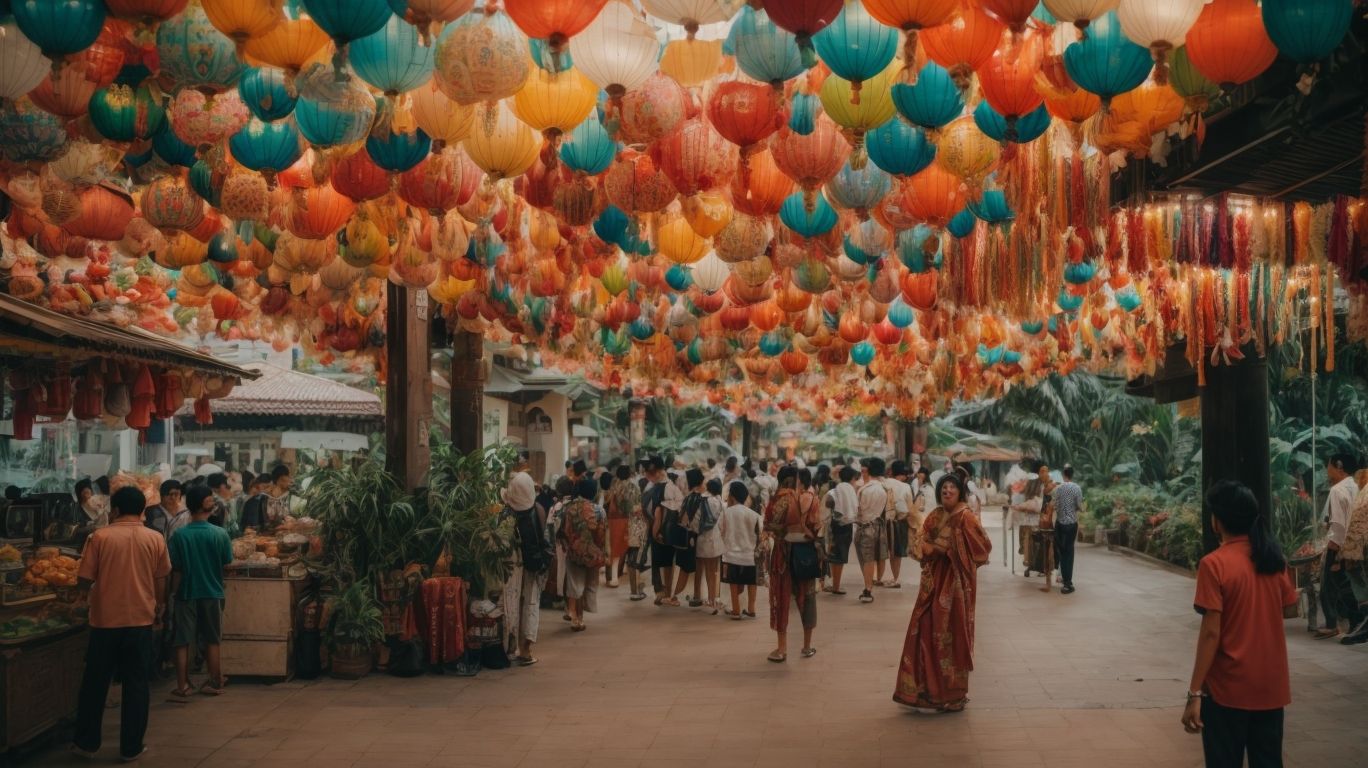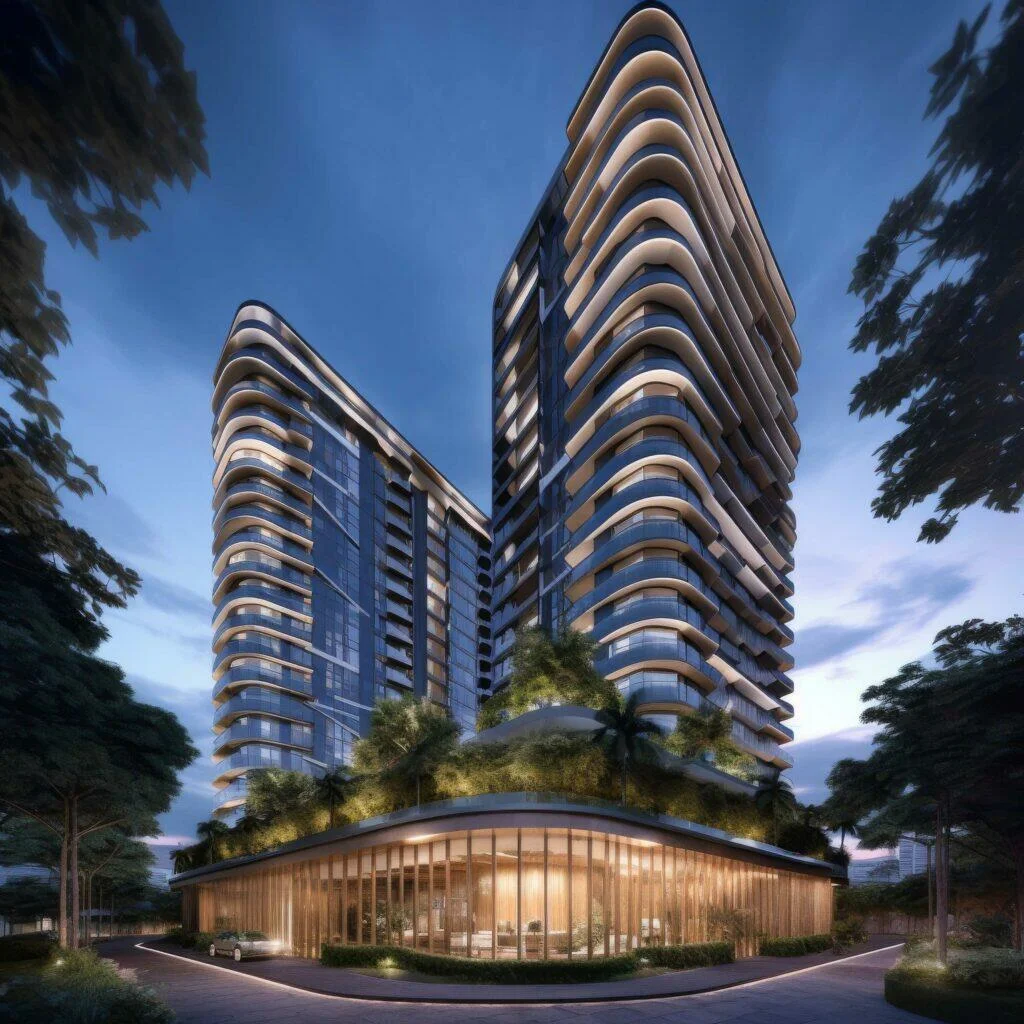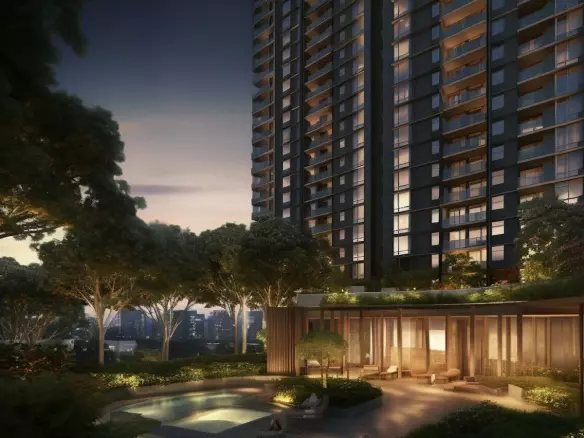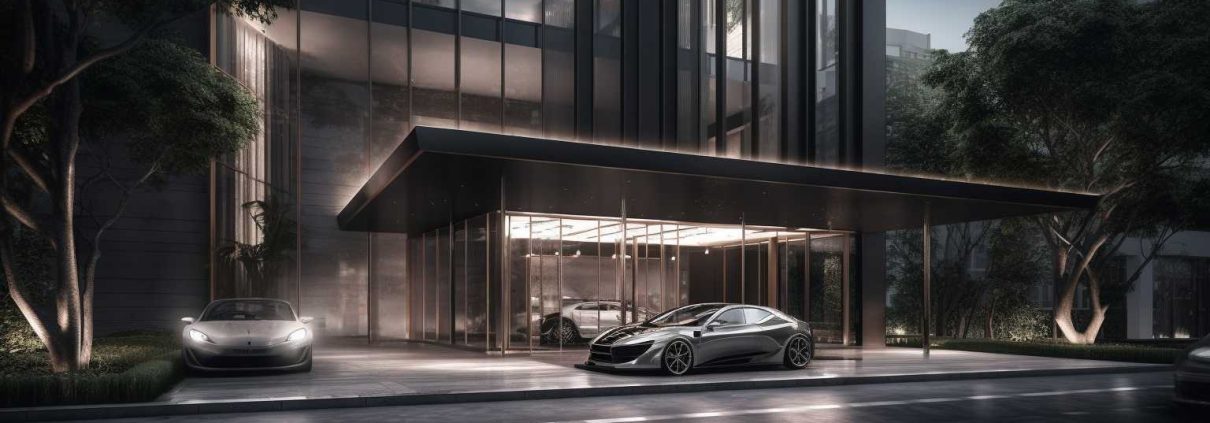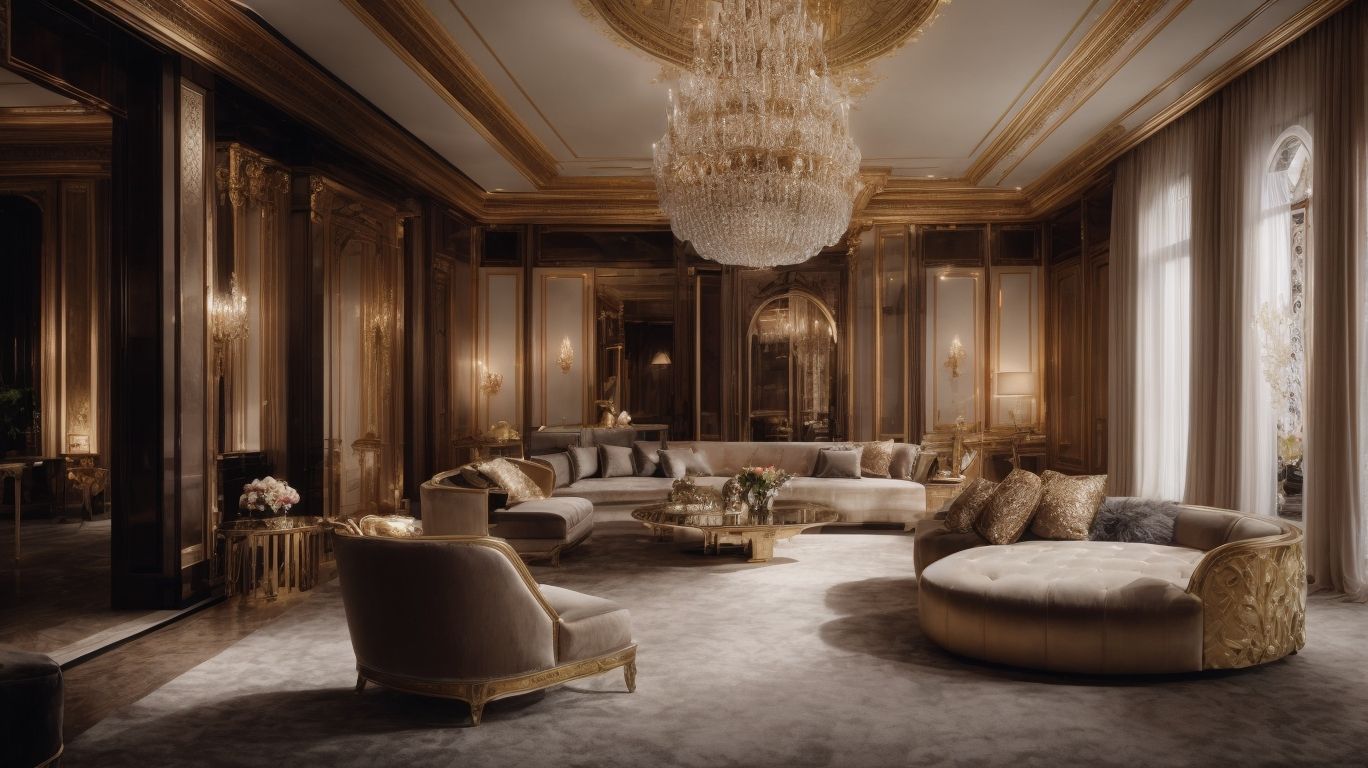
Welcome to the world of luxury, where comfort, opulence, and indulgence reign supreme. In today’s fast-paced society, finding moments of relaxation and indulgence has become a top priority. With the constant pursuit of success and the stressors of daily life, it’s important to prioritize self-care and find ways to elevate your living experience. You deserve the best, and this article will guide you through the evolution of luxury living and how you can incorporate it into your life to achieve ultimate comfort and satisfaction.
What is Luxury Living?
What is Luxury Living?
Luxury living can be defined as a lifestyle that is characterized by opulence, abundance, and exclusivity. It involves indulging in high-quality products, services, and experiences that go beyond basic needs. This can include luxurious homes, fine dining, designer fashion, high-end vehicles, and extravagant vacations. The focus is on comfort, elegance, and refinement.
However, the concept of luxury living is subjective and can differ based on personal preferences and cultural backgrounds. While some may associate luxury with material possessions, others may prioritize experiences, well-being, and personal fulfillment. Ultimately, luxury living is about creating a life of abundance and enjoyment that is tailored to individual desires and aspirations.
The History of Luxury Living
Luxury living has a long and illustrious history, dating back to ancient civilizations. In ancient Egypt, pharaohs resided in opulent palaces adorned with gold and precious stones. The Roman Empire witnessed the emergence of luxurious villas with intricate architecture and lavish amenities. During the Renaissance, European nobility indulged in extravagant castles and palaces. In the modern era, luxury living has evolved to encompass high-end apartments, penthouses, and luxury resorts. Understanding the history of luxury living allows us to truly appreciate the modern comforts we enjoy today.
Pro-tip: Immerse yourself in the fascinating history of luxury living by exploring historic landmarks and museums.
How Did Luxury Living Begin?
Luxury living began as a result of human civilization’s progress and the development of social hierarchies. Here are the key steps in the evolution of luxury living:
- Emergence of Wealth: As societies advanced, individuals amassed wealth through trade, agriculture, or conquest.
- Differentiation of Status: The accumulation of wealth led to social hierarchies, with the elite displaying their status through luxurious possessions.
- Extravagant Display: The wealthy built grand palaces, wore elaborate clothing, and adorned themselves with precious jewels.
- Patronage of the Arts: Wealthy patrons supported artists, architects, and craftsmen, fostering the creation of exquisite works.
- Expansion of Luxury Goods: Global exploration and trade brought exotic materials, spices, and textiles, further fueling luxury consumption.
In ancient Egypt, the pharaohs showcased their status through opulent palaces, elaborate tombs, and extravagant burial rituals. The pyramids of Giza, built as royal tombs, stand as enduring symbols of luxury and power from this era. So, how did luxury living begin?
How Has Luxury Living Evolved Over Time?
Throughout history, luxury living has undergone significant changes and transformations. To understand how luxury living has evolved over time, consider the following steps:
- Early civilizations: In ancient times, luxury living was associated with royalty and the elite, with extravagant palaces and opulent lifestyles.
- Industrial revolution: As industrialization progressed, luxury living became more accessible to the middle class, with advancements in manufacturing and mass production.
- 20th century: The concept of luxury living expanded to include modern conveniences, such as electricity, indoor plumbing, and automobiles.
- Post-war era: With economic growth and globalization, luxury living became more globalized, with the emergence of luxury brands and international travel.
- 21st century: Luxury living is now characterized by personalized experiences, sustainability, and a focus on well-being, as people seek more meaningful and conscious ways of living.
By examining the evolution of luxury living over time, we can see how societal changes, technological advancements, and shifting values have shaped our understanding of luxury.
The Modern Definition of Luxury Living
The concept of luxury living has transformed in recent times to encompass more than just material possessions. Presently, it also encompasses experiences, convenience, sustainability, and wellness. Today, luxury living is about having the privilege of personalized services, state-of-the-art amenities, and innovative technology. It is about residing in a space that promotes well-being and supports a healthy lifestyle.
To fully embrace this modern definition of luxury living, consider investing in smart home technology, integrating eco-friendly features into your living space, and prioritizing self-care and wellness in your daily routine.
What Defines a Luxury Lifestyle?
A luxury lifestyle is defined by exclusivity, opulence, and the pursuit of high-quality experiences. It is characterized by indulging in luxurious goods and services, such as designer fashion, high-end travel, fine dining, and lavish accommodations. Access to elite clubs, events, and personalized services is often involved in a luxury lifestyle. It serves as a status symbol and is associated with comfort, leisure, and refinement.
The definition of a luxury lifestyle may vary among individuals, as it is subjective and influenced by personal preferences and cultural backgrounds. Ultimately, a luxury lifestyle reflects a desire for the finest things in life and the ability to fully enjoy them.
How Has the Perception of Luxury Living Changed?
The perception of luxury living has undergone significant changes over time, influenced by various factors. Here are the key steps that highlight how the perception of luxury living has evolved:
- Shift in Materialism: The focus has shifted from conspicuous consumption to experiences and authenticity.
- Emphasis on Personalization: Individuals now seek customized and unique luxury experiences tailored to their preferences.
- Inclusion and Diversity: The concept of luxury is no longer limited to a select few, as there is now increased representation and recognition of diverse lifestyles.
- Sustainability and Ethical Consumption: There is a growing demand for luxury products and services that are sustainable and ethically sourced.
- Experience Over Possession: Experiences are now valued more than physical possessions, with luxury emphasizing memorable moments and emotional connections.
These changes reflect a broader shift in societal values and a redefined understanding of luxury beyond material wealth.
The Impact of Technology on Luxury Living
Technology has greatly influenced the world of luxury living, transforming various aspects of our lives. From communication and entertainment to home management, it has revolutionized the way we live.
Smart home technologies, such as voice-controlled assistants and automated systems, offer convenience and improved security. Virtual reality and augmented reality provide immersive experiences in luxury travel and real estate. Furthermore, wearable technology has introduced personalized health and wellness monitoring for luxury consumers.
The undeniable impact of technology on luxury living has created a more seamless and sophisticated lifestyle for those who embrace it.
How Has Technology Revolutionized Luxury Living?
Technology has completely transformed the way we experience luxury living, providing us with more convenience, comfort, and entertainment options than ever before. Here are a few ways in which this transformation has taken place:
- Smart Home Automation: With technologies like voice-controlled assistants, automated lighting, and climate control systems, we now have seamless control over our living spaces.
- High-Tech Security Systems: Advanced security systems equipped with biometric access, surveillance cameras, and remote monitoring ensure our safety.
- Smart Appliances: Our appliances, such as refrigerators, ovens, and washing machines, have become smarter and can be controlled remotely, offering us energy efficiency.
- Entertainment Systems: We can now enjoy an unparalleled entertainment experience with home theaters, immersive sound systems, and streaming services.
- Virtual Reality and Augmented Reality: These technologies have made it possible for us to take virtual tours, have interactive shopping experiences, and receive personalized services.
- Internet of Things (IoT): With connected devices, we can now remotely monitor and control various aspects of our homes, further enhancing our comfort and functionality.
What Are the Latest Technological Innovations in Luxury Living?
The latest technological innovations in luxury living are revolutionizing the way we experience comfort and convenience. Smart home automation systems now allow homeowners to effortlessly control lighting, temperature, security, and entertainment with just a few taps on their smartphones. Virtual reality and augmented reality technologies are elevating the luxury shopping experience, providing immersive and personalized interactions. Advanced home appliances and gadgets, such as voice-controlled assistants and high-tech kitchen appliances, are streamlining daily tasks and making them more efficient. In addition, eco-friendly technologies, like solar power systems and energy-efficient smart devices, are enabling luxury homeowners to reduce their carbon footprint while still enjoying a luxurious lifestyle.
The Future of Luxury Living
The future of luxury living is on the horizon, with advancements in technology, sustainability, and personalized experiences shaping the way we live. AI assistants in smart homes will automate tasks and increase convenience, while eco-friendly features like solar panels and energy-efficient systems will become standard. The ability to customize living spaces to individual preferences will also be a key aspect of luxury living. Additionally, amenities such as private wellness centers and virtual reality entertainment will elevate the luxury experience. Embracing technology, sustainability, and personalization will be crucial for individuals seeking opulent lifestyles in the future. By incorporating these elements, one can create a luxurious living experience that caters to their unique desires and values.
The future of luxury living is full of possibilities, offering the ultimate haven of comfort, convenience, and indulgence.
What Trends Can We Expect to See in Luxury Living?
In the world of luxury living, several trends are emerging that are reshaping the industry. Here are some trends we can expect to see:
- Sustainable Luxury: With increased awareness of environmental issues, luxury brands are incorporating sustainability into their practices. From eco-friendly materials to renewable energy sources, sustainability will be a defining trend in luxury living.
- Wellness and Mindfulness: Luxury living is moving beyond material possessions and focusing on holistic well-being. Expect to see an emphasis on wellness retreats, personalized wellness programs, and mindfulness practices integrated into luxury lifestyles.
- Smart Homes and Technology: The integration of technology into luxury living will continue to grow. Smart homes with automated features, voice assistants, and personalized experiences will become the norm.
- Experiential Luxury: Luxury consumers are seeking unique and memorable experiences. This trend will drive brands to create immersive experiences, exclusive events, and personalized services that go beyond traditional luxury goods.
- Personalization and Customization: Luxury consumers value uniqueness and exclusivity. Brands will offer personalized products and services, allowing customers to tailor their luxury experiences to their individual tastes and preferences.
As the luxury living landscape evolves, these trends will shape the future of the industry, providing innovative and sustainable experiences for discerning consumers.
How Will Climate Change and Sustainability Affect Luxury Living?
Climate change and sustainability will have a significant impact on luxury living, prompting a shift towards more eco-friendly and socially responsible practices. Here are some steps that luxury living can take to adapt:
- Implement green building and design techniques to reduce energy consumption and carbon footprint.
- Source sustainable materials for construction and furnishings to minimize environmental impact.
- Incorporate renewable energy sources, such as solar panels or geothermal systems, for powering luxury properties.
- Adopt water-saving technologies and practices to conserve water resources.
- Support and invest in ethical and fair trade practices to ensure the well-being of workers involved in luxury production.
- Promote sustainable transportation options for residents, such as electric vehicle charging stations or bike-sharing programs.
- Engage in conservation initiatives and collaborate with environmental organizations to protect and preserve natural habitats.
In the early days of luxury living, environmental considerations were often overlooked. However, as awareness of climate change and sustainability grew, luxury brands began to recognize the importance of adopting eco-friendly practices. This led to the development of innovative technologies and the integration of sustainable design principles in luxury properties. Today, luxury living is evolving to prioritize environmental responsibility, ensuring a harmonious coexistence with the planet for generations to come.
The Role of Social Media in Shaping Luxury Living
Social media has played a crucial role in shaping the concept of luxury living. It has emerged as a powerful platform for individuals to showcase their extravagant lifestyles and for luxury brands to advertise their products. Influential social media personalities, including celebrities and lifestyle bloggers, hold significant sway over consumer behavior, influencing trends and setting standards for what is considered luxurious.
Luxury brands have also fully embraced social media, utilizing it to cultivate exclusive online communities, provide personalized content, and directly engage with their customers. To navigate this digital landscape, those seeking to elevate their luxury living experience should follow influential accounts, participate in brand campaigns, and stay informed about the latest trends.
How Has Social Media Influenced the Perception of Luxury Living?
Social media has significantly impacted the perception of luxury living. Here are some ways in which it has influenced this perception:
- Aspirational content: Influencers and luxury brands showcase extravagant lifestyles, creating a desire for luxury living among their followers.
- Access to information: Social media provides easy access to information about luxury products, destinations, and experiences, making it easier for people to learn about and desire a luxurious lifestyle.
- Visual storytelling: Platforms like Instagram allow users to curate visually appealing feeds that portray a luxurious lifestyle, further fueling the desire for luxury living.
- Community building: Social media brings together individuals with similar interests in luxury living, creating a sense of community and validation for those seeking a luxurious lifestyle.
- Democratization: Social media has made luxury more accessible, allowing people to discover and connect with luxury brands and experiences that were once out of reach.
Fact: According to a survey, 70% of luxury consumers say they are influenced by social media when making purchasing decisions.
What Are the Pros and Cons of Social Media in the Luxury Living Industry?
Social media has had a significant impact on the luxury living industry, bringing with it both advantages and disadvantages. On the positive side, it has increased brand exposure, allowed for reaching a wider audience, and helped build a strong online presence. Additionally, social media enables direct customer engagement and feedback, enhancing customer relationships. However, there are also downsides, such as the risk of negative publicity and potential damage to brand reputation. Privacy concerns and the possibility of counterfeit products are also challenges to be navigated.

